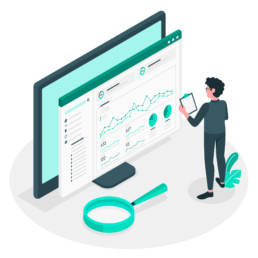Data-Driven Spend Analysis: Maximizing Spend Reduction with Minimal Organization Drag
Problem
With the digitization of almost every element of the procurement process, large organizations are accumulating vast stores of data regarding their spending habits. Owing to its complex nature however, senior leadership is often at a loss when it comes time to mine this data and enact structural change based on the insight it provides. The irony then is that firms clamoring for a roadmap to spend reduction often already possess one, albeit in a language they can’t read. Unable to precisely execute savings efforts in the face of these challenges, senior leaders leave money on the table—and know it.
Solution
PART 1
Given the advent of data driven analytics tools, organizations should never want for granular visibility into their spending habits, nor be at a loss when trying to identify addressable categories for spend reduction efforts. Establishing a way to unify and order such a massive quantity of raw data however, is often a challenge. Creating a detailed spend taxonomy aligned with how goods and services are actually used allows an organization to develop a comprehensive snapshot of operational expenditures, and more importantly, make informed decisions, driving tangible bottom line growth. Exhibit 1 illustrates a sample spend taxonomy in which spend data has been retrieved from across an organization-wide effort, then cleansed, translated, and organized for easy digestion. This can even be achieved across different AP systems with different GLs. We then break this down categorically in order to create a reconciled picture of expenses, and use a spend cube in order to create a hierarchy of savings opportunities.

PART 2
Once this data has been processed, an organization can begin to select and implement savings efforts, whether they be unit cost focused, or more structural, demand management revisions. Here however, many organizations face a second hurdle; convincing internal customers of the desirability and ease of obtaining newly identified savings can be difficult—or so they think. Fortunately, being able to display these opportunities in ease to grasp charts helps convince internal customers of the logic of new found savings approaches. Exhibit 2 illustrates the types of information that can be easily displayed in an intuitive, drill down format.

Often savings can be achieved simply by switching to a cheaper, but functionally equivalent substitute, decommissioning disused systems revealed by data analysis, or switching to a shared service model, achieving economies of scale. Regardless, the data obtained in the analytics process allows us to balance the dollar value of every service, against its necessity to employees. In this way, it is possible to ensure critical systems are not compromised, creating an objectively robust procurement portfolio that is data-driven.
Takeaways
Seeing procurement data in a way that allows insight is difficult because the data is messy, incomplete and not organized in a way that is useful for this task. Adopting a spend analytics system that makes sense of imperfect data and displays it in an agile, intuitive format empowers users to uncover hidden inefficiencies and formulate plans of attack for getting savings.








































